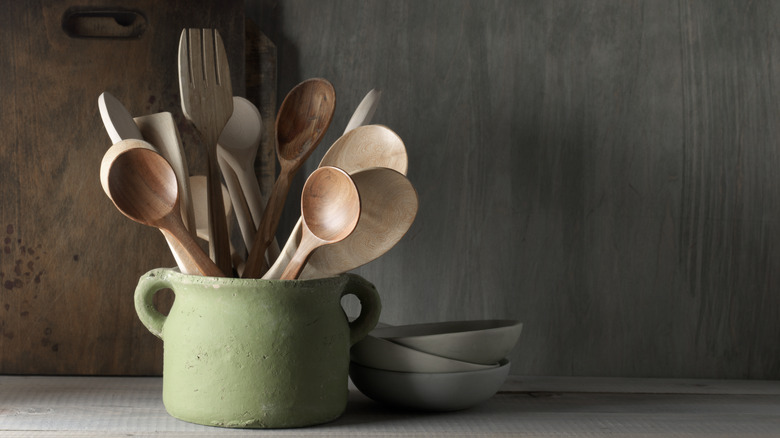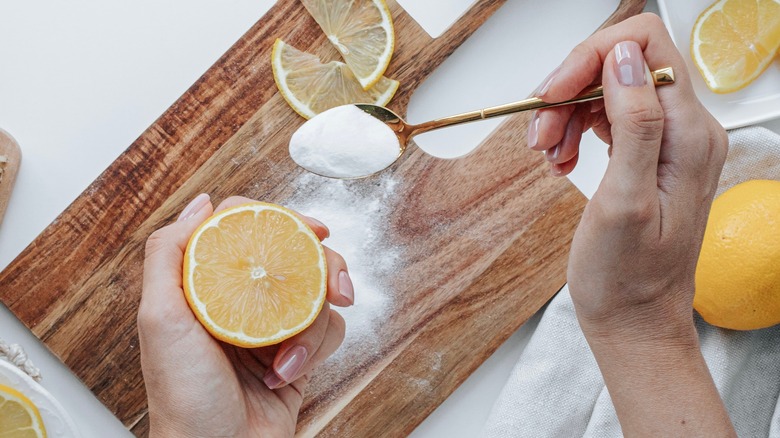Why You Shouldn't Put Wooden Utensils And Cutting Boards In The Dishwasher
Once you close the dishwasher door, do you know what really goes on in there? Well, if you place your wooden kitchenware inside, it's a massacre. Regardless of which rack you stack them on, putting your wooden dishware in the dishwasher can destroy them. The appliance's cycle can get as hot as 155 degrees Fahrenheit, and the closed environment makes inside the dishwasher steamy. These conditions are an enemy to wooden utensils, cutting boards, and dishes. That's how you end up with split or warped dishware, which are kitchen items that you should get rid of ASAP.
Once your cookware succumbs to the effects of high heat and humidity, it might not be safe to use anymore. Bacteria can seep into the cracks and transfer the utensils or cutting boards during food prep or consumption. To avoid broken cookware and cross-contamination, don't put your wooden items in the dishwasher. They need special treatment, from hand washing to deep cleaning.
How to clean your wooden kitchenware
Hand washing your wooden dishware with soap, water, and a soft sponge works to get rid of food and oils after everyday use. Once the utensils are clean, it's best to wipe them with a cloth before letting them air dry. If stains or odors are plaguing your dishware, then it's time for a deep clean. Just like you shouldn't expose hardwood floors to lots of water, you don't want to soak your wooden kitchenware. The water can well inside the wood grains and cause it to rot. Metal scours aren't the answer either, as they can scratch the wood's surface and create a nest for bacteria.
To disinfect your wooden kitchen utensils properly, you only need salt and lemon. The salt acts as a gentle abrasive that lifts dirt, while the lemon juice has antibacterial properties. Simply sprinkle coarse salt on your wooden dishware and use a half-cut lemon as your scour. Then, rinse with warm water and wipe dry.
Oiling your wooden utensils and cutting board is another way to extend the life of your cookware. This coating adds a layer of protection from scratches and keeps the wood from drying out, which leads to cracks. Dap a paper towel with food-grade mineral oil or beeswax and apply it to the wood in a circular motion. Cooking oils are unsuitable substitutes, so leave those in the cabinet. However, you can try a DIY wood butter. With the proper maintenance, your wooden cookware should last for years.

